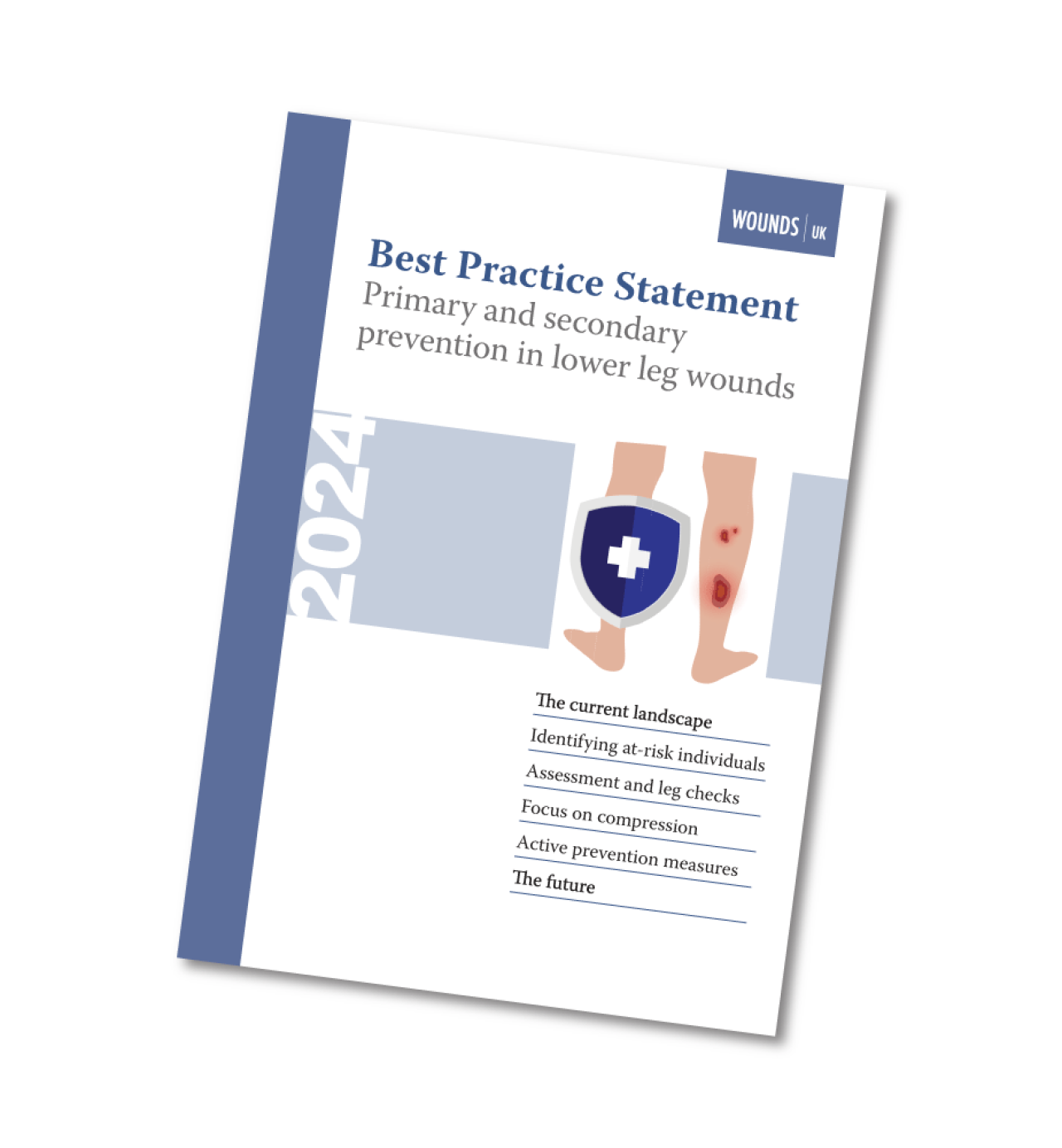Providing evidenced based best practice for the treatment of venous leg ulcers
Access our latest publications that provide clear evidence based guidance by leading clinicians, with a focus on practical, holistic, and person-centred strategies.

Primary and secondary prevention in lower leg wounds
There is a need for a change in mindset from managing wounds to, whenever possible, preventing them altogether. This involves identifying individuals who are at risk of developing ulceration and actively implementing measures to reduce this risk through ongoing monitoring and assessment.
This Best Practice Statement aims to:
-
Identify and acknowledge gaps within current protocols for preventing venous leg ulcers (VLUs) and lower limb wounds
-
Provide a rigorous and active strategy for both primary and secondary prevention of VLUs
-
Promote change and extend mindsets to encompass not just healing but also primary and secondary prevention.
-
The ultimate aim is to provide all clinicians with the tools to identify individuals at risk of developing lower limb wounds, and to prevent – or minimise – the risk of patient harm.

Introducing our latest toolkit for change - a guide to personalised self-care for people with venous leg ulcers.
The aim of this guide is to empower patients and equip clinicians with the tools they need to advocate for self-care, ultimately improving outcomes and reducing the burden of wounds on healthcare services. Self-care is the ability for individuals to take an active role in achieving, maintaining, or optimizing their health and wellbeing.
This guide provides insight into the potential benefits and challenges of self-care, highlights barriers to adoption, and outlines approaches to overcome them. We also provide guidance to clinicians on assessing patient suitability, capacity, and willingness to be involved in self-care, emphasizing the importance of effective communication to optimise self-care.
Our Dialogue Tool supports clinicians in promoting self-care in the clinical setting. Join us in promoting personalized self-care and improving outcomes for those with venous leg ulcers.

The Holistic Management of Venous Leg Ulceration (Second Edition)
The Holistic Management of Venous Leg Ulceration (Second Edition) is a Best Practice Statement designed to help healthcare practitioners treat patients with venous leg ulcers (VLUs) effectively.
This document is for healthcare practitioners in all care settings who are treating patients with venous leg ulcers (VLUs). The aims of this BPS are to have a positive impact on patient outcomes, sustainability/economics and the community workforce, by:
- Supporting the practical implementation of the NWCSP recommendations
- Helping to ensure consistent clinical practices in relation to the assessment and management of people with VLUs
- Providing guidance on when to escalate and refer to specialist services.
- It will provide clear guidance based on relevant evidence and the experiences and opinions of clinicians, with a focus on practical, holistic, and person-centred strategies.
The BPS also includes 'Reflect and Be Bold' statements, giving clinicians the confidence to provide the best standard of care within their capabilities.

Consensus document: Transforming leg ulcer care
Around 2% of UK adults suffer from lower-leg ulceration, with over 1 million people affected. Venous disease is responsible for 81% of leg ulcers, with risk factors including increasing age, obesity, prolonged sitting or standing, smoking, and pregnancy.
The National Wound Care Strategy Programme recommends compression therapy and endovenous surgery, with healing rates of up to 85.6% when both treatments are used. However, UK practice is currently underperforming, with healing rates of 47% at 12 months.
To address this, Nursing Times brought together three panels of nurse leaders from different settings and levels of seniority to create a consensus document on transforming leg ulcer care.

LeaRn On Demand
Sign up to access:
E-learning modules covering wound care, compression therapy, and much more that can contribute to the non-participatory hours of CPD required for revalidation.
-
L&R brand videos, resources, and information.
-
A new community where you can connect with others in the profession
-
A platform to ask questions at any time.